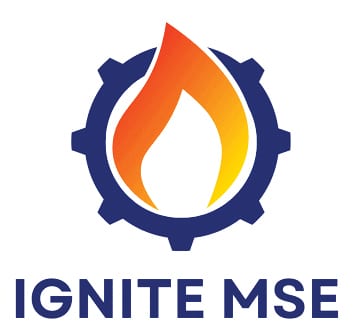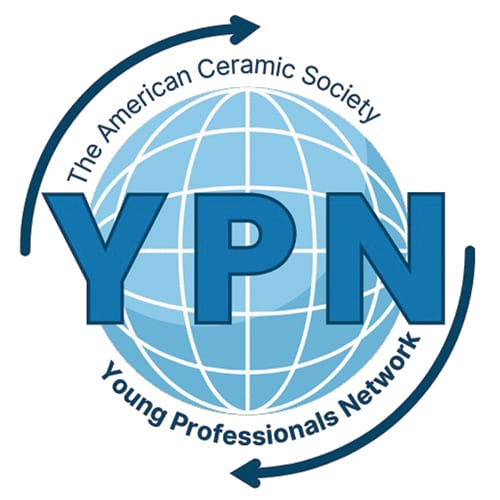The ‘Emerging professionals’ issue
bulletin | emerging professionals


Science for Society articles
IGNITE MSE: Igniting student passion for materials research
For many ACerS members, their passion for materials research is driven by a desire to create a positive impact on society through their scientific endeavors. ACerS student members can share this passion at ACerS conferences through IGNITE MSE, a special student professional development event organized by the Ceramic and Glass Industry Foundation.
IGNITE MSE poster sessions are designed to showcase the human side of research, with submissions focused on outreach and community engagement; technology for social good; and inclusivity, diversity, and ethics in research.
Drawing on this format, we have invited student-written articles from each of these topic areas for the June/July Bulletin. Read the articles below and learn more about IGNITE MSE.
Outreach and community engagement
Navigating through the noise: Key factors for effective outreach in an age of information overload
By Rishabh Kundu
In an era where billions of gigabytes of data are generated daily,1 effectively disseminating information—particularly in scientific realms—presents significant challenges. Hence, strategic approaches to outreach and community engagement become imperative.
Through insights gained from more than five years of engagement in outreach initiatives, I aim to highlight several essential factors that can significantly aid in fruitfully getting the word out about science.
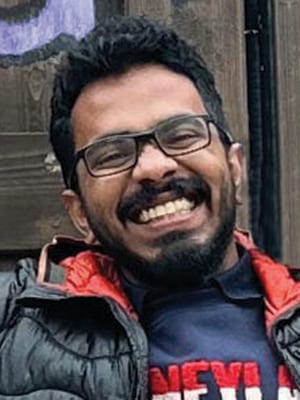
READ MORE
Target audience
Identifying a specific audience and tailoring your content for them will allow information to be communicated more effectively. While aspiring to engage a wide and varied demographic is commendable, crafting a “one-size-fits-all” delivery approach is challenging when you consider the diverse viewpoints held by each individual, as influenced by their age and cultural background.
Appropriate platform
Once you have established the target audience, it is important to determine their primary sources/platforms of information. Attempting to engage teenagers effectively through LinkedIn, for instance, would not be ideal because they typically do not use that platform.
Engaging content
Even with the right place (appropriate platform) and the right people (target audience), the content needs to be engaging to capture and hold the audience’s attention. For example, when introducing high school students to materials science at institutional open house days, I incorporate interactive elements into my demonstration, such as posing questions with multiple correct answers. This format keeps all avenues of engagement open regardless of their response—and an engaged audience is an attentive audience.
Feedback
While we may be passionate about the topics we are promoting, it is ultimately the audience’s interest we must spike. So, seeking feedback from the target audience is crucial to supporting effective engagement. I learned the value of feedback during my undergraduate studies, when I delivered a presentation on heat shields to high school students. I crafted the presentation based on my interests, but the students expressed boredom and disinterest in the subject matter. Though initially disheartening, their feedback taught me a valuable lesson—what inspires me may not necessarily captivate others. So, I revised the content based on their feedback, resulting in a more effective presentation.
Iteration
Outreach is a recursive process, meaning it requires timely follow-ups to maintain engagement and retention. Even if you develop an engaging content plan that ticks all the boxes above, information is quickly forgotten if you do not review or revisit it again.2
This list is not exhaustive, and I welcome feedback and discussions from peers involved in outreach activities or those motivated to embark on such endeavors.
References
1 Duarte, F. “Amount of data created daily,” Exploding Topics. Published 13 Dec. 2023. Accessed 19 March 2024.
2 Ebbinghause, H., Memory; a contribution to experimental psychology, Columbia University, 1913.
About the author
Rishabh Kundu is an incoming Ph.D. student at Case Western Reserve University. He has been recognized as an ACerS Global Ambassador and is highly engaged in outreach efforts focusing on materials science and sustainability. Contact Rishabh.
COLLAPSE ARTICLE ABOVE
ACerS Global Graduate Research Network
ACerS Global Graduate Researcher Network (GGRN) membership addresses the professional and career development needs of graduate-level research students who have a primary interest in ceramics and glass. Learn more.
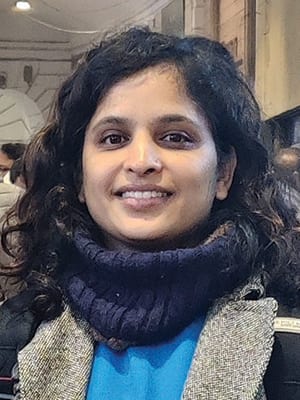
technology for social good
From Himalayan roots to technological heights: Experiencing the impact of science on society
By Seema Negi
Technological advancements and innovations do not happen in a void; as innocuous as a development may seem, new devices are bound to have some level of impact on society. Whether this impact is beneficial or not, however, is an open question.
My first encounter with the impact that technology can have on local communities was in my childhood home of Thatyur, a small village in the Himalayan heartland of Uttarakhand, India. A defining moment in the history of this area was the construction of the Tehri Dam, the tallest dam in India. This significant development reshaped the landscape and required the mass relocation of many villages and their inhabitants. But it also brought new job opportunities that many members of my community, including my relatives, embraced. Our school trips to the dam further fueled my interest in engineering, showing me the tangible benefits of technology in our daily lives.
READ MORE
In 2007, I gained a deeper appreciation for how technology can address social and environmental issues during my time at Govind Ballabh Pant Engineering College in Pauri. As a member of the robotics club, I built robots using recycled materials, a project that showcased the possibilities for sustainable manufacturing. In addition, the lack of internet access meant we had to rely on books and senior students’ knowledge, which emphasized to me the importance of shared knowledge and resourcefulness in technological innovation.
In 2014, when I was studying materials science at the Indian Institute of Technology Gandhinagar, I became the senior student sharing their knowledge when I taught students from institutes with fewer resources about various advanced material characterization techniques. This experience showed me the power of technology in promoting educational equity.
Later during my studies, in 2017, I was introduced to the world of 3D printing. I researched and demonstrated that a cheap resin printer can be used to 3D print ceramics. This demonstration shows the possibilities for resource-constrained colleges and universities to partake in basic 3D printing research as well.
My work with ceramic slurries for 3D printing helped accelerate the development of a silver-based ink with higher stability. This ink is now being used in an educational project called “Electricity on Paper,” which teaches electrical concepts to kids.
Reflecting on my journey, I see technology as a bridge connecting individuals, ideas, and solutions, surpassing geographical and resource limitations. My experiences affirm the role of technology as a catalyst for social good.
About the author
Seema Negi is a Ph.D. candidate at the Indian Institute of Technology Bombay who develops photosensitive ceramic slurries for 3D-printed ceramics. In her spare time, Seema enjoys dancing, knitting, and cooking.
COLLAPSE ARTICLE ABOVE
ACerS Young Professionals Network
ACerS Young Professionals Network (YPN) aims to provide support, community, and leadership opportunities to members as they transition from students to successful professionals in the broader ceramics society. Learn more.
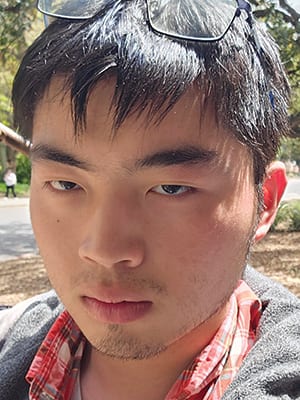
INCLUSIVITY, DIVERSITY, AND ETHICS IN RESEARCH
Alloying my love of pottery with my love of materials science
By Alex I. Tam
Growing up, my father drilled into me that “the hard work of today is the success of tomorrow.” Rather poetically, this mantra is reflected in my Chinese name, which contains the character for “complete.”
As a child, I would grip my pencil so tightly while completing assignments that it left indents in my hand. Outside of school, I worked in my maternal grandmother’s antique shop, helping sell porcelain pillows, antiques, and clay idols.
This job gave me an interest in art, and in both middle school and college, I spent time working on pottery and porcelain at the town’s craft center. During that time, I experimented briefly with crazing, which involves choosing glazes with different thermal expansion coefficients than the base ceramic so a web of tiny cracks will appear and cover the final surface.
READ MORE
This love of pottery and crazing, in addition to my interest in studying the Japanese language, led to my discovery of the Japanese artform of kintsugi. In contrast to crazing, which only introduces small line fractures into the glaze, kintsugi involves breaking the entire ceramic vessel and then joining the pieces back together using lacquer and gold. The repaired ceramic gives the effect of permanent evanescence because the breaking of a singular moment is captured in all eternity.
This idea that something can be complete “because of” rather than “despite” the cracks is echoed in my undergraduate studies in materials science. Engineering of grain boundaries is a major tool in the design of ceramics and composite materials. By deliberately introducing cracks into a ceramic’s microstructures, it can halt the transmission of defects while increasing the material’s strength.
These lessons from pottery and materials science about “completeness” changed my understanding of the concept. Like everyone, I am not without my internal contradictions. But these flaws play a role in bolstering my character and integrity.
In addition, my memories working in the antique shop and listening to my father’s and grandparents’ stories help me cherish my current opportunities: my grandparents never went to university as I am doing now. So, through my internal flaws and bonds with others, I can learn to improve myself, thus living up to my “complete” name.
About the author
Alex I. Tam is a third-year undergraduate student at the University of California, Davis, working with professor Subhash H. Risbud on the characterization of novel superconductors and professor Mingwei Zhang on the characterization of novel high-entropy alloys. His hobbies include studying other languages, reading history books, and experimenting with porcelain.
